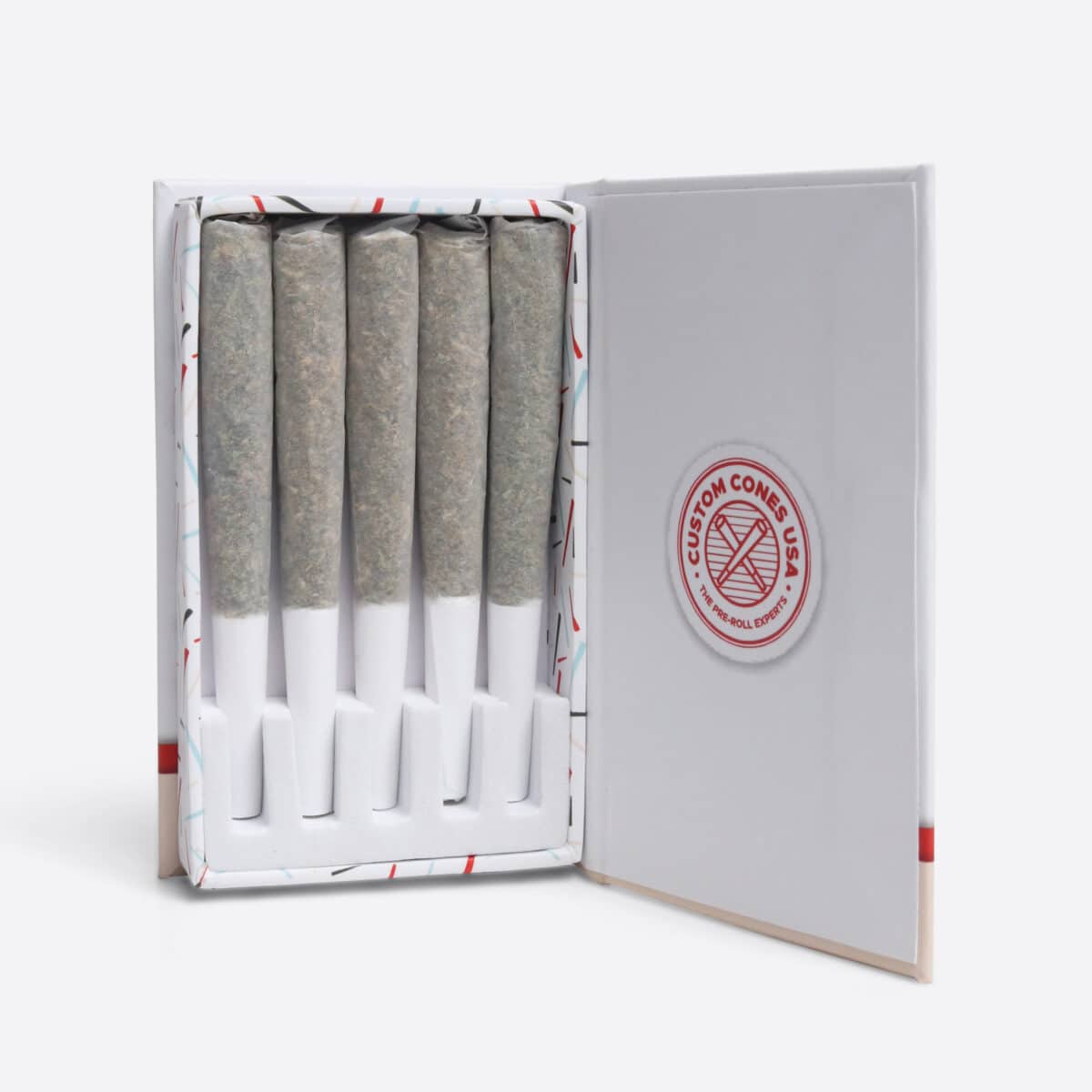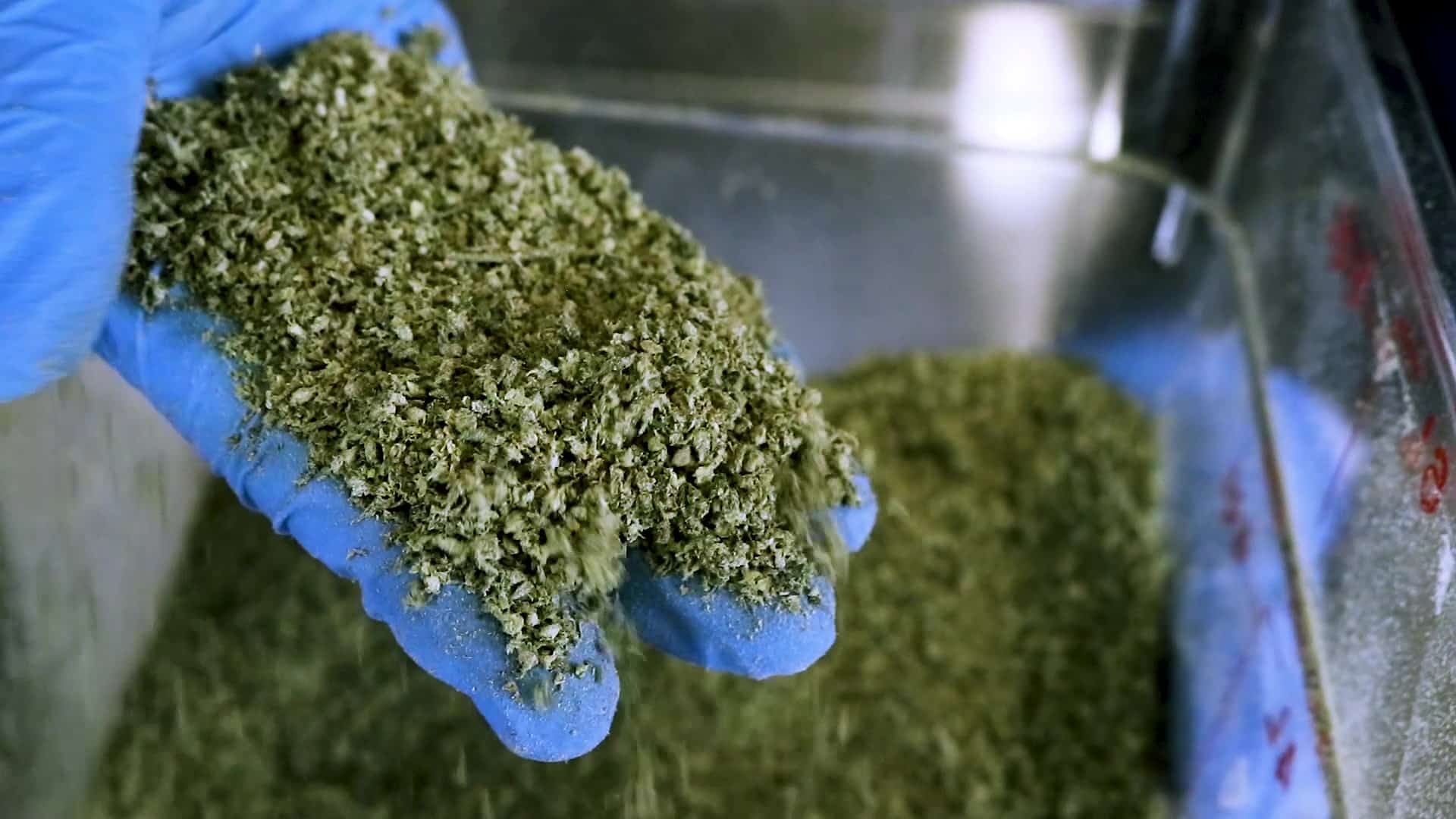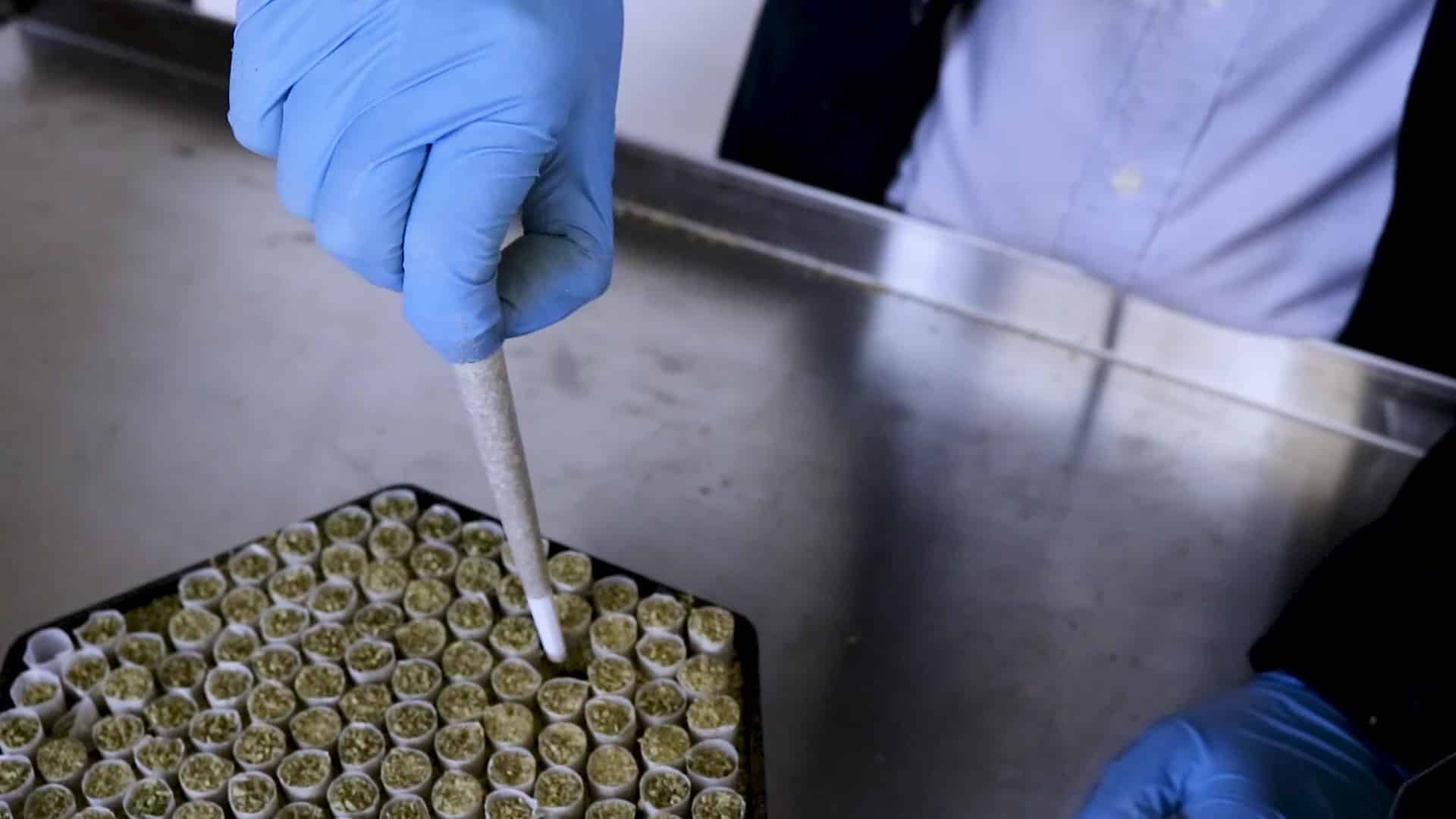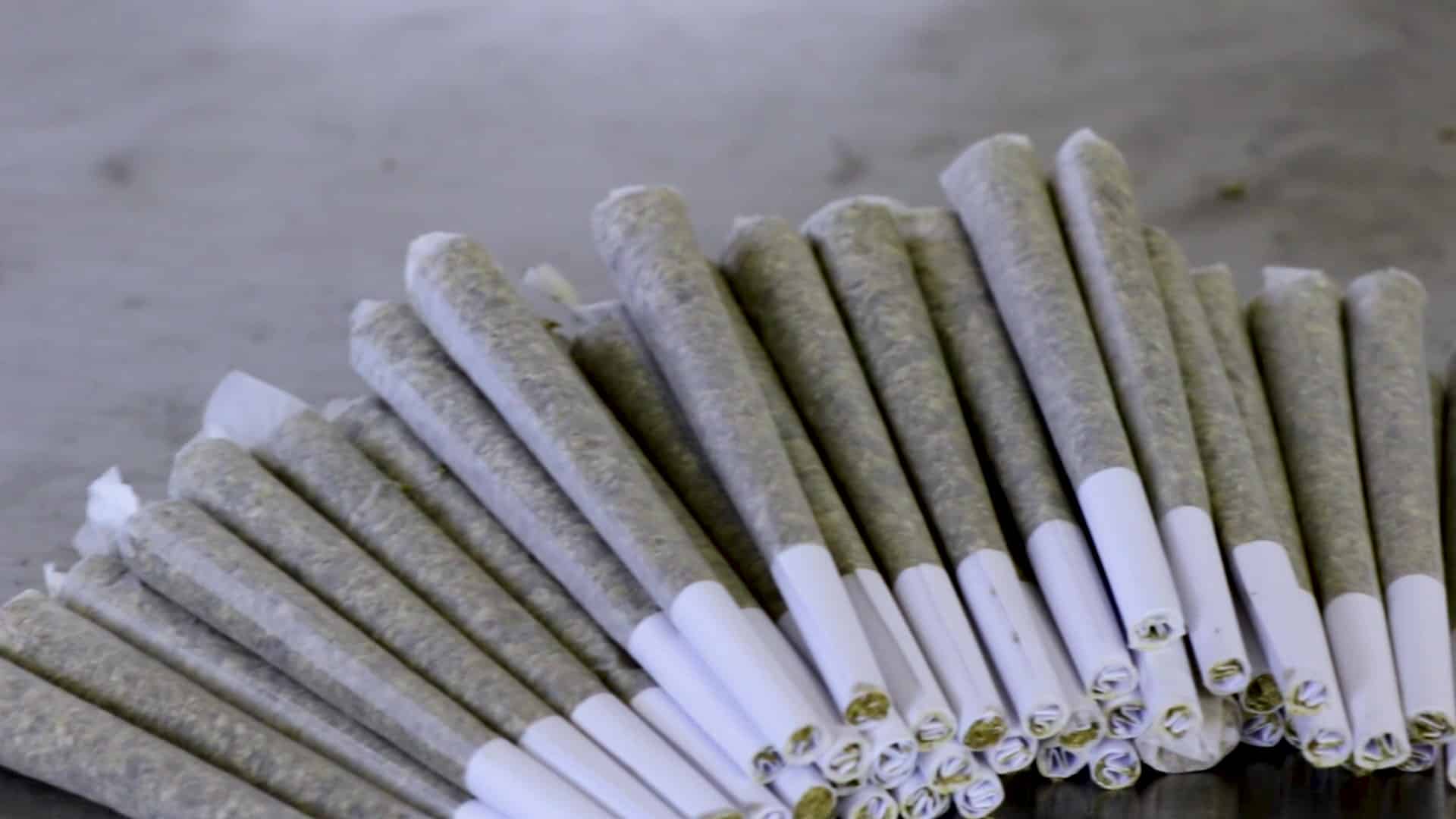THE BASICS OF MAKING PRE-ROLLS

One of the foundational products of the cannabis industry is the pre-roll joint. It’s become ubiquitous in dispensaries and retail shops around the country.
The convenience and relatively low price the pre-roll provides has made the sector not only the fastest-growing segment of the industry, but also made the product the number one add-on at cannabis retail outlets.
Which makes it a great way for new businesses to break into the industry and get their brand noticed. But while it seems simple, making quality pre-rolls and then keeping up with the latest trends, like infused pre-rolls for example, can be more difficult than it seems.
THE BASICS OF MAKING PRE-ROLLS
Pre-roll customers look for brands that promise a good product at a good price. They want a pre-roll that is potent, tastes good and burns well, without canoeing or running. Sounds simple enough, right?
The basic steps for creating a quality pre-roll are grinding, sifting, filling, finishing and packaging, which may sound simple, but requires focus and precision at each stop to create the kind of pre-rolled joint that keeps customers coming back.
GRINDING YOUR WAY TO GREAT PRE-ROLLS

You work hard to grow the best flower you can and when it comes time to grind it down for a pre-roll, it’s important to do it in such a way that preserves your hard work. And that will depend on your choice of machine.
While a machine with high rpm, like a blender, food processor, coffee grinder or even a whip-style grinder, will certainly work to break up your buds, the speed of the blades cause friction and heat, which can pulverize your bud and degrade your cannabinoids and terpenes, the parts of the flower where the potency and flavor is kept.
Instead, you want to choose a machine that uses a low rpm, but has a high torque to put the least amount of stress on your flower and preserve the trichomes.
The other concern when grinding your flower is particle size. If you grind your flower too far down, it can turn to dust, which burns fast and hot and can even be packed too tight to get a good draw through the pre-roll. An inconsistent grind can also cause an inconsistent pack and that can lead to an uneven burn.
And again, using a blender or food processor can lead to uneven particle sizes, leaving you with too wide a size range to create a consistently packed pre-roll. Differing particle sizes can cause air pockets in the pre-roll, causing them to run. It’s also important to have a consistent particle size when using many pre-roll filling machines, especially those that use metering trays. An inconsistent grind makes a metering tray less reliable because some of the slots for your pre-roll will contain larger particles and others will be smaller, causing the weights to vary.
The best choice for manufacturers looking to create consistent, quality pre-rolls is a high-torque, low-rpm industrial grinder paired with screens that provide for consistent particle size and stays cool enough not to destroy the trichomes on your flower. You should also consider getting multiple screens to allow for different particle sizes. Because of the variations between strains of cannabis, there’s no single particle size that will get the best results, so it’s important to find the one that works for you and your flower.
Quality Pre-Rolls Need Sifting
Sifting your ground cannabis removes any stems and other matter that happened to get through the grinder, as well as large particles that might break your pre-roll cones when you go to fill them. It’s a simple step but one that is often overlooked and can often lead to uneven broken and overall poor-quality pre-rolls.
Even more important than just removing stems from the material, the sifter helps ensure an even particle size distribution across the ground material. That means that each individual particle is a similar size to the particle next to it. And, again, consistency is the key to well-packed pre-roll that does not run or canoe when lit. Like a grinder, it’s important to have multiple screens for your sifter, especially if you are dealing with multiple strains that can require different particle sizes during packing.
In addition, a consistent particle size will help ensure your pre-roll filling machine works properly, especially if you use a metering tray to measure out your flower. By grinding and sifting your flower to a uniform particle size, each hole in your metering tray will have less variance keeping your pre-rolls much more accurate in weight.
So not only will grinding and sifting help you make better pre-rolls, but it will help you make pre-rolls faster. Remember, your finished product is only as good as the material you prepare to put into it.
Filling Pre-Rolls
While you can always hand fill or roll your pre-rolls for sale, it’s a slow, labor-intensive method that’s not particularly well-suited to large-scale production. Thankfully, there are a variety of machines you can use to help ease production and ensure that your pre-rolls are consistent every time.
The first decision any cannabis business looking to get into the pre-roll game has to make is to decide what kind of pre-roll filling machine is best for their needs. The two main considerations when choosing a cone-filling machine are electronic vs non-electronic and tabletop versus fully automated.
Non-electronic machines require more hands-on labor as employees will have to literally shake or thump the device to pack the flower into your pre-roll cones or tubes. Machines in this class include the Bumpbox or the Fast Fill series (which also can be used with an optional electronic vibration table). These will work for smaller companies, but many eventually grow out of these machines as they scale up production.
An electric cone-filling machine, on the other hand, usually uses either vibration or an up-and-down motion to help the cannabis settle and pack into the pre-rolls evenly. And the difference in that motion is important. A machine like the King Cone or the Fill N’ Fold, which has a motor that bounces the pre-rolls up and down, for example, will produce a tighter pack than a vibrating platform machine like the Fast Fill, RocketBox series or knockbox-style machine.
As the industry grows, new technology continues to develop to fill pre-roll cones that doesn’t use vibration, including the Hummingbird PR-1, which uses centrifugal force to pack higher-density material near the crutch and a looser density of material near the top with a smooth gradient throughout the cone in order to provide a more consistent burn.
Though they usually cost more, electronic machines are a smart investment that allow for quicker production runs and cut down on labor requirements and also create a more consistently high-quality pre-roll.
Automated pre-roll filling machines

For large brands looking to take their pre-roll production to the next level, automation makes the most sense. Automated pre-roll machines can take boxes of cones, ground cannabis and automatically fill, weigh, pack, tamp, twist, cut off any excess paper and even weigh the final joint, delivering a level of consistency and automation unmatched by traditional pre-roll manufacturing methods.
Automated pre-roll machines can typically produce between 1,000 and 2,000 pre-rolls per hour depending on the size and level of automation so as a rule of thumb it makes sense to automate when you are making 50,000 or more pre-rolls per month.
But there are some downsides to automated pre-roll filling machines, however. First, the cost can often be prohibitive for smaller operations. Additionally, they can be incredibly finicky. Machines are designed to operate in a uniform and repeatable fashion, but as an input, cannabis is anything but uniform and automated machines are not as flexible or forgiving when it comes to the varying levels of stickiness between different strains.
Finishing your pre-rolls

There are two main ways to close up your pre-rolls to prepare for packaging: the twist and the Dutch crown.
The easiest way to close a pre-roll is to simply twist the remaining paper, both sealing in the cannabis an creating a short wick for lighting. While there are machines that will do this, it’s usually easier for employees to do it by hand. Many, many pre-rolls are finished with a simple twist.
The other way is called the Dutch Crown, which is created by folding the ends of the paper over to close in the cannabis instead of twisting. Again, this can be done by hand with a tamp stick, pushing the paper into what is essentially a neat pile, creating a smooth, stylish edge. Again, this can be done by hand or with fully automated machines.
One easy way to split the difference is the Fill N’ Fold, a tabletop cone-filling machine that comes with a special tool designed to help the user fold over the tops of multiple filled joints with a single move, allowing for production of a Dutch crown tip at a greater rate.
Packaging your pre-rolls
With your pre-rolls packed and closed, the final step before getting your product to market is packaging, and while it seems like it might be less important than the steps before it, the truth is that your packaging tells the budtenders and customers a lot about your product.
First, are you selling a single pre-roll or a multipack?
For single pre-rolls, the plastic pop-top “doob tube” is the most common package around. Not only are customers most familiar with this type of packaging, the doob tube comes in various colors and seal options and are mostly airtight, which will help preserve your product for longer and prevent air and moisture degradation. Plastic pop-top tubes can also be customized in color and with a label to highlight your brand name or logo.
For higher-end pre-rolls, clear plastic or glass tubes not only allow customers to see what they’re buying before they buy it, but signal that the product inside is a premium item. These type of tubes also allow for options when choosing a cap, from corks to screw tops to child-resistant and airtight caps, all equally customizable.
But remember to check your local regulations before deciding on packaging, as some markets require the tubes to be opaque and the rules on child resistant caps differ between states. Some states don’t even allow plastic, for example.
Another thing to consider is the multi-pack, which has seen substantial growth over the past few years. For example, in 2018 multi-packs only made up 27.7% of the market. By 2023, multi-packs make up 47.62% of the market—representing a growth of about 20% over 5 years. During this time, there has been a nearly 400% growth in multi-packs that have a volume of 2 or 5 grams.
There are myriad options when creating packaging for a multi-pack, and each is going to have its own advantages when it comes to compliance laws, pre-roll protection and branding. There are a variety of flip packs, push packs, snap packs, slider boxes, tins, jars and tubes, all available in multiple colors and completely customizable to incorporate your branding.
Finally, make sure that whatever packaging you choose, there is enough room to include any and all necessary compliance statements or warnings. The easiest way to ensure your packaging includes everything you need is to work with experts to design labels that not only include your branding, but also meet all state requirements and then have the completed packages – labels and all – shipped to your company.
HOW TO MAKE INFUSED PRE-ROLLS
Once you’ve got your process in place and you are happy with your pre-rolls, the best way to being to expand your brand is with infused pre-rolls, which are the hottest products on the market these days. Combining flower with a concentrate, infused pre-rolls deliver the kind of high-potency experience that modern consumers are looking for and the sales stats show it.
Infused pre-rolls now make up 41.6% of total sales in the segment, a year-over-year increase of 19.6%. In Canada, the year-over year increase is even larger, with infused, or “connoisseur” pre-rolls jumping 129% over the previous year to now make up 32.6% of the pre-roll market.
While it’s true that making infused pre-rolls is simply a matter of combining your flower with some form of concentrate, it’s not quite as simple as it sounds. Pre-rolls can be infused either inside the joint or outside, for example.
To infuse inside, the two primary methods are mixing your concentrate – often distillate – with flower or using a machine to inject a concentrate into the center of your pre-roll. Mixing flower with a concentrate can be difficult, but there are machines like the Infused Flower Mixer, which uses dual centrifugal action to fully combine the component parts within minutes into a mix that can go directly into a pre-roll cone or tube. Pre-roll companies can literally just pour a concentrate – any concentrate, from distillate to rosin and everything in between – on their flower and the Infused Flower Mixer handles the rest, using physics to make sure the two substances are properly and fully mixed and ready to be placed into pre-roll cones, reducing the steps necessary to create perfectly infused pre-roll joints.
In fact, the centrifugal motion helps the concentrate actually penetrate and infuse the flower, rather than just coating it, leading to perfect homogenization. When done by hand, mixing flower and concentrate often ends up forming clumps that can lead to inconsistent final products.
The Automated Injection Method works just like it sounds, placing a customizable line of concentrate into the middle of a pre-roll. This machine uses a specially designed and patented reservoir to heat up your oil, which is then fed through a medical-grade needle and into the center of finished pre-rolls. Up to 20 pre-rolls at a time are loaded into a circular cartridge, which rotates under the needle, where a rod of oil is placed perfectly in the center of the pre-roll.
The machine works with Live Rosin, Live Resin, High Terpene Extract, Delta 8 & 9 Distillate, Sauce, Badder, Sugar, Crumble and more, creating a “hash hole” in the middle of your joint as the concentrate vaporizes while being smoked.
Infusing the outside of a pre-roll simpler, but more labor intensive. To do this, heat your concentrate and then, using a food-grade brush, paint it as evenly as you can over the outside of the pre-roll (some companies even use a food-safe glue for this instead of a concentrate). Then, roll the painted pre-roll in kief, the golden trichome dust that falls off of flower during grinding and sifting.
Other companies like to roll their concentrate into a snake-like tube and then simply wrap that around the joint. Boh of these methods create a lot of side smoke, but are easy and effective ways to combine your flower with a concentrate.
Often, infused pre-rolls include both methods: a concentrate mixed in with the flower and then painted with distillate and rolled in kief. As prices for flower and concentrates continue to drop in mature markets, the possibilities are practically endless.
Other important considerations
Choosing the right pre rolled cones
Deciding which cones to use and what size pre-rolls to make is another important decision. Most companies make a 1-gram size, but many make smaller sies, like a half-gram or even the smaller “dogwalker” mini cone size, both of which fit better in multi-packs.
Another consideration is the paper used in your cones, and not just the choice of refined white, natural brown or hemp. Making sure the rolling paper and pre-roll cones you buy are clean should be a priority. While rolling paper is not required to be tested, it can still cause your pre-rolls to fail standard tests, so it’s always smart to get your pre-roll cones and tubes from a company that thoroughly tests for pesticides, heavy metals and microbials and has the documents to prove it.
Making the right amount of pre-rolls
Another variable to work out during your production process will be how many pre-rolls you can make and sell per month, as you want to make sure that your customers always get fresh product so they keep coming back.
Most companies (53.5%) produce between 1,000 and 5,000 pre-rolls per month, though 13% of companies make 5,000-10,000 and another 13% make between 10,000 and 25,000. Start small, obviously, but don’t be afraid to scale up to meet need if your pre-rolls start flying off of shelves. And either way, consider adding a humidity pack to your packaging to ensure that your pre-rolls don’t dry out.
Make what’s popular
It’s important to check the sales trends in your state, since different markets have different preferences. Analytics firms like Headset offer a variety of tools, including sales charts, that are an excellent resource to see what consumers in your market are spending their money on, particularly when it comes to strains and sizes.
However, industry-wide trends like infused pre-rolls, mini “dogwalker” cones and multi-pack options are always a smart choice and a way to make your mark in a busy segment of the industry.
Pre-roll production SOPs and Quality Control
Finally, make sure you have standard operating procedures (SOPs) in place for your manufacturing process and that you do quality control before you send your product to market. SOPs will not only help streamline your process and help ensure consistency in your product line, they make on-boarding new employees easier and allow you to find efficiencies and savings in your processes.
Quality control measures, such as weighing your pre-rolls after packing or eyeballing your infused pre-rolls to ensure uniformity, will help guarantee that you put your best product into the marketplace every time so that customers learn to trust your brand and keep coming back.
Final Thoughts
It’s a lot, right? But like any other consumer packaged good, making the right choices at the beginning will set you up for success in the future, so make sure you take everything into consideration, from grinding and sifting all the way through packing and packaging.
And don’t worry, there are pre-roll experts out there who can help you every step of the way.
